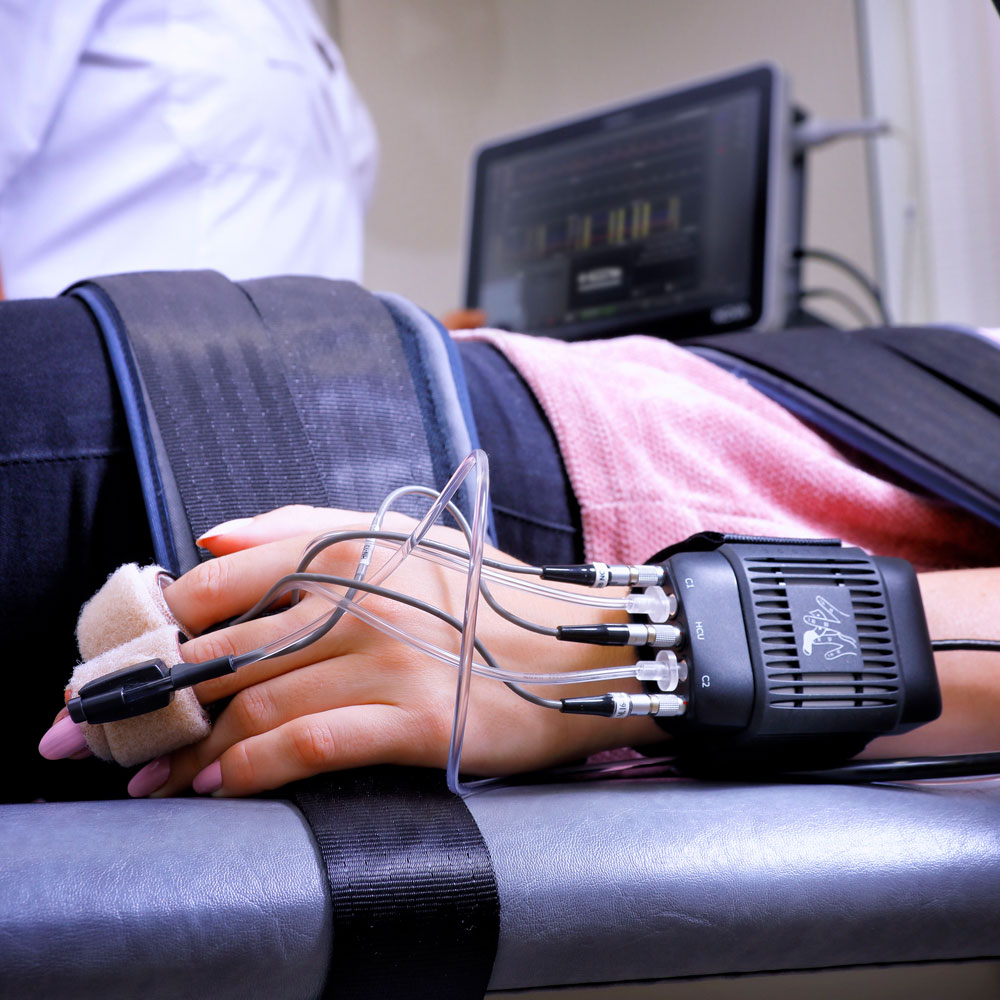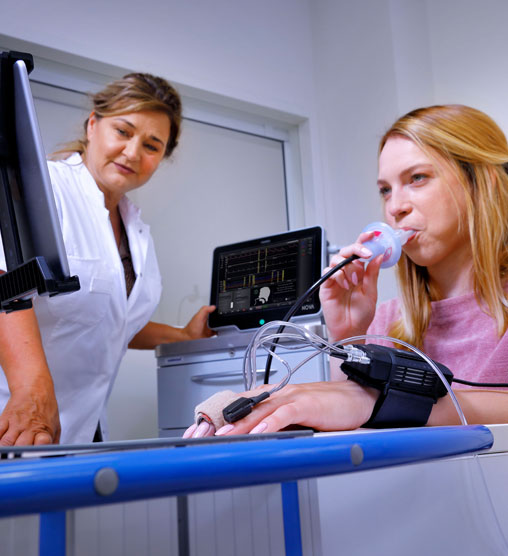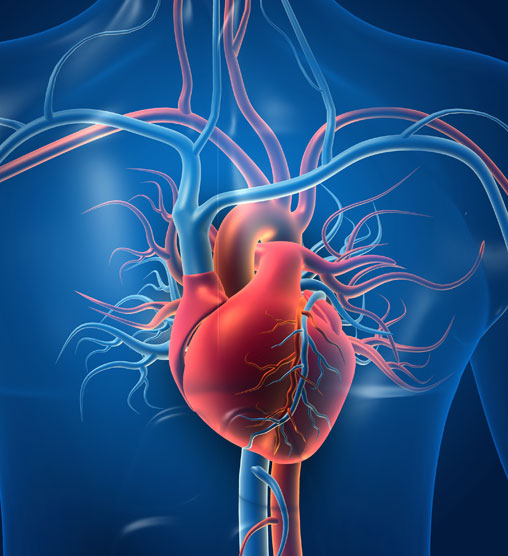Technology
Volume-clamp: continuous BP measurements using a finger cuff
The volume-clamp method was first introduced by Czech physiologist Prof. Dr. J Peňáz in 1973 [1]. He demonstrated that it is possible to perform continuous measurements of the finger arterial pressure by using a finger cuff.
This cuff consists of an inflatable bladder and a plethysmograph, which incorporates a light source (LED) and detector. The light is absorbed by the blood, and the pulsation of arterial diameter during a heartbeat causes a pulsation in the light detector signal.
Background of the Finapres® NOVA Technology
The first step in this method is determining the proper unloaded diameter of the finger arteries. This is the point at which finger cuff pressure and intra-arterial pressure are equal and at which the transmural pressure across the finger arterial walls is zero. Next, the arteries are clamped, to keep them at this unloaded diameter, by varying the pressure of the inflatable bladder using the fast cuff pressure control system [2].
Finding and verifying the setpoint
All Finapres devices incorporate a servo-controller system, which defines a set point and a measured value that is compared with this set point. In this case, the set point is the signal of the plethysmograph (unloaded diameter of the arteries) that must be clamped, while the measured value comes from the light detector. The amplified difference between the set point and measured value, “the error signal”, is used to control a fast pneumatic proportional valve in the Frontend Unit / NANO CORE ® module. This proportional valve modulates the air pressure generated by the air compressor. This causes changes in the finger cuff pressure, in parallel with intra-arterial pressure in the finger, to dynamically unload the arterial walls in the finger. The cuff pressure thus provides an indirect measure of intra-arterial pressure.

References:
- Penaz, J. “Photoelectric measurement of blood pressure, volume and flow in the finger” In: Digest of the 10th International Conference on Medical and Biological Engineering. ” Dresden 104 (1973).
- Wesseling, KH “Physiocal, calibrating finger vascular physiology for Finapres.” Homeostasis 36 (1995): 67-82.
- Imholz, Ben PM, et al. “Fifteen years experience with finger arterial pressure monitoring: assessment of the technology.” Cardiovascular Research 38.3 (1998): 605-616.
- Langewouters, GJ, et al. “Why use Finapres or Portapres rather than intra-arterial or intermittent non-invasive techniques of blood pressure measurement?” Journal of medical engineering & technology 22.1 (1998): 37-43.
- Rongen, Gerard A., et al. “Comparison of intrabrachial and finger blood pressure in healthy elderly volunteers.” American journal of hypertension 8.3 (1995): 237-248.
- Gizdulich, Paolo et al. “Models of brachial to finger pulse wave distortion and pressure decrement.” Cardiovascular Research 33.3 (1997): 698-705.
- Westerhof, Berend E., et al. “Variable day / night bias in 24-h non-invasive finger pressure against intrabrachial artery pressure is removed by waveform filtering and level correction.” Journal of hypertension 20.10 (2002): 1981-1986.
- Guelen, Ilja, et al. “Validation of brachial artery pressure reconstruction from finger arterial pressure.” Journal of hypertension 26.7 (2008): 1321-1327.
APPLICATION FIELDS
Beat-to-beat hemodynamics
Finapres devices apply in the fields of Autonomic Failure Diagnosis, Hemodynamic Evaluation, Education, and other application fields.
APPLICATION FIELDS
Beat-to-beat hemodynamics
Finapres devices apply in the fields of Autonomic Failure Diagnosis, Hemodynamic Evaluation, Education, and other…-

Other application fields
Orthostatic Hypotension, Space Flight, Sleep Disorder, and Pharmacological Research.
Read More



